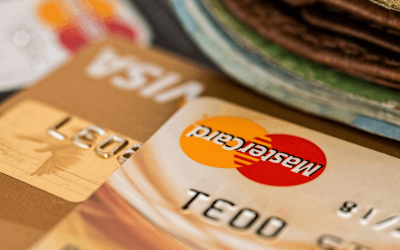Divorce and bankruptcy are two important life challenges that can bring overwhelming stress and uncertainty. For many, navigating these issues can feel like walking through a storm without a map. In Wisconsin, the effects of both divorce and bankruptcy can intertwine, complicating an already difficult situation. This article aims to provide a clear understanding of how these two processes intersect in the Badger State.By exploring the legal framework, emotional impact, and practical steps involved, we hope to equip readers with the knowledge they need to face these challenges with confidence. Whether you are personally experiencing these issues or supporting someone who is, our Wisconsin perspective will guide you through the complexities ahead.
Understanding the Interplay Between Divorce and Bankruptcy in Wisconsin
Divorce and bankruptcy can create a complex web of legal and financial challenges, especially in Wisconsin. When a couple decides to split, financial issues frequently enough become a focal point.This is particularly true if one or both partners are facing significant debt. In Wisconsin, property division during divorce can affect how debts are handled. Assets and liabilities might be split down the middle, but this doesn’t automatically mean that one partner gets to walk away free of debts. Factors such as marital property laws and individual financial circumstances can play a crucial role in how bankruptcy and divorce intersect.
Here are some key points to consider:
- Marital Property Rules: Wisconsin is a community property state, meaning that moast assets and debts acquired during the marriage are considered jointly owned.
- Debt Obligation: If one partner files for bankruptcy during or after the divorce, it may impact the other’s financial situation and responsibility for shared debts.
- Timing Matters: The order in which divorce and bankruptcy are filed can influence the outcome in both cases.
Understanding these dynamics is crucial. the right approach frequently enough requires legal guidance to ensure that both divorce and bankruptcy proceedings are handled optimally. Making informed decisions can help alleviate some of the financial burdens that accompany both scenarios, allowing for a smoother path toward financial recovery.
Evaluating your Financial situation: Key Considerations for Divorcing Couples
When facing divorce, understanding your financial landscape is crucial. This involves reviewing all assets and liabilities to form a clear picture of your finances. Start by gathering essential documents, such as:
- Bank statements: Examine all accounts held jointly or individually.
- Loan documents: Identify any mortgages,car loans,or personal loans.
- Retirement accounts: Look into 401(k)s, IRAs, and pensions.
- Tax returns: Review previous years’ returns for income and other financial obligations.
Once you have a thorough overview, it’s essential to assess how your financial situation may change post-divorce. This includes understanding alimony and child support, as they can significantly impact your budget. Additionally, keep in mind the following factors:
- Asset division: How will the marital property be split?
- Credit scores: How might divorce affect your credit standing?
- Potential bankruptcy: Are there any existing debts that could lead to bankruptcy?
| Financial Aspect | Consideration |
|---|---|
| Ownership of Assets | Who keeps the family home? |
| Debts | Are both partners responsible for shared debts? |
| Income Changes | What is your new living expense outlook? |
Legal Strategies for Managing Divorce and Bankruptcy Proceedings
Dealing with divorce is challenging enough, but when combined with bankruptcy, the situation can feel overwhelming. In Wisconsin, it’s essential to consider both processes concurrently to achieve the best financial outcome. One strategy is to file for bankruptcy first, as it may help eliminate debts that could complicate the divorce proceedings. This process can empower individuals to negotiate from a more stable financial position. However, it’s also vital to ensure that any assets are disclosed and divided fairly during the divorce process, as hiding assets can lead to serious legal trouble.
Another effective approach is to be proactive in communicating with your legal team. Collaborate closely with your attorney to outline key financial details, such as:
- Current debts
- Assets to be divided
- Credit scores
- Future financial goals
| Types of Debt | Impact on Divorce |
|---|---|
| Credit Card Debt | Might potentially be split, depending on usage |
| Mortgage | Can affect property division |
| Student Loans | Typically remain with the borrower |
Understanding these elements can minimize conflict and promote a smoother resolution. By leveraging legal expertise and fostering open communication, individuals can navigate the complex intersection of divorce and bankruptcy more effectively.
Resources and Support Networks for Wisconsin Residents Facing Financial Turmoil
For wisconsin residents experiencing financial difficulties, various resources and support networks are available to help navigate this challenging time. These organizations offer valuable information and assistance, helping individuals find their footing in the aftermath of divorce or during bankruptcy proceedings. Here are some resources to consider:
- Legal Aid Wisconsin: Provides free or low-cost legal services to those who qualify, ensuring access to essential legal guidance.
- Wisconsin Community Action Program associations: A network of local agencies offering financial assistance, budgeting help, and housing support.
- National Foundation for Credit Counseling: Offers credit counseling services and financial education to help you manage your debts and rebuild your financial life.
Beyond these organizations, individuals can benefit from local support groups and community centers that foster connections with others facing similar challenges. Such networks can provide emotional support and practical advice. Consider engaging with:
- Support Groups: Many communities have groups specifically for those going through divorce or financial strain, where you can share your experiences and gain support.
- Faith-Based Organizations: Local churches or faith groups frequently enough have programs for those in financial distress, offering resources, support, and sometimes even financial aid.
- City or County Social Services: These agencies can guide you to various assistance programs available at the municipal level.
Key Takeaways
As we navigate the intricate waters of divorce and bankruptcy in Wisconsin, it becomes clear that the journey, while challenging, also offers opportunities for renewal and resilience.The intersection of these two significant life events can feel overwhelming, yet understanding the legal landscapes and emotional dimensions allows individuals to reclaim their narratives. In Wisconsin, the laws regarding divorce and bankruptcy intertwine uniquely, necessitating a careful evaluation of one’s financial obligations and personal aspirations. By seeking professional guidance and engaging in open conversations, you can chart a course toward a more stable future. As you move forward, remember that every ending is also a beginning. Embrace the chance to rebuild, rediscover, and redefine your life on your own terms. While the road might potentially be fraught with uncertainties, it is indeed also rich with potential for growth and newfound strength. Whatever challenges lie ahead, no that you are not alone—resources and support systems are available to champion your journey. Here’s to navigating through the complexities and emerging into a brighter chapter ahead.




